- st.augustine@aaanimalcontrol.com
Call 24/7 for a free quote:
904-312-7580
St. Augustine FL Wildlife Information
Florida Wildlife Commission: 888-404-3922
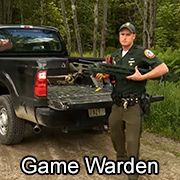 If you have any questions about the wildlife of St. Augustine, you can contact the Florida Wildlife Commission,
sometimes called the Florida Fish & Wildlife Agency. Florida game wardens address many wildlife management matters, from hunting licenses, to poaching, endangered species, and St. Augustine wildlife management.
They deal with wild animals outside the range of a pest control company, such as cougars or bears. If you have a problem with nuisance wildlife in St. Augustine like squirrels, snakes, bats, or raccoons,
the state agency is very unlikely to help. You need to hire a private company (here are their prices) such as Professional Wildlife and Rodent Removal at 904-312-7580.
If you have any questions about the wildlife of St. Augustine, you can contact the Florida Wildlife Commission,
sometimes called the Florida Fish & Wildlife Agency. Florida game wardens address many wildlife management matters, from hunting licenses, to poaching, endangered species, and St. Augustine wildlife management.
They deal with wild animals outside the range of a pest control company, such as cougars or bears. If you have a problem with nuisance wildlife in St. Augustine like squirrels, snakes, bats, or raccoons,
the state agency is very unlikely to help. You need to hire a private company (here are their prices) such as Professional Wildlife and Rodent Removal at 904-312-7580.
I also have listed several sources for free St. Augustine wildlife help. One example, if you've found an injured animal or lost baby bird or other baby animal is the St. Augustine Wildlife Rehabilitation Clinic: 904-692-1777 Or just read below for more info about the wild animals of St. Augustine.
Types of Wildlife and Animal Problems in St. Augustine, FL
FL State bird: Northern mockingbird
State mammal: Florida panther, manatee, dolphin
State reptile: Loggerhead sea turtle
State amphibian: N/A
State fish: Florida largemouth bass, Atlantic sailfish
State insect: Zebra longwing Butterfly
Florida is a warm, southern state with everything from orange trees to a large, central swamp known as The Everglades. As you might imagine, this makes for a variety of interesting creatures both land-loving and aquatic. In fact, Florida is so appealing to animals, species not native to the state have been able to move in and thrive. The perfect examples of this are the Burmese Python and the red-tail boa constrictors. These snakes are not native to North America, but so many were released of escape into the Florida wild that a breeding population was spotted in The Everglades. This is not necessarily a good thing, as many native creatures-raccoons and small mammals in particular-have begun to vanish from that region of the state. Not even a smaller alligator can always withstand an attack from the Burmese Python.
Alligators are used to being at the top of the food chain, and because of this the large reptiles are often nuisances around homes, where people fear attacks on themselves and pets. Particularly dangerous are alligators over 8 feet, during the mating season in May. Florida's suburbs are often surrounded by water, and alligators make good use of the man-made channels and canals around the region. Another problematic reptile is the iguana, which is significantly smaller than the alligator but large enough in its own right.
The warm climate in this state means reptiles and amphibians are plentiful. Florida has four venomous species of snakes, all of which can sneak into a yard at any moment. However, they are relatively rare. They include the Eastern Diamondback, the Pigmy Rattler, the Eastern Coral Snake, and the Cottonmouth, or Water Moccasin. Cottonmouth snakes are drawn to water-something most homes have in Florida. Thankfully, most snakes will move out of a lawn after a day or so. Some of these snakes like to live in the water, adding to the list of semi-aquatic animals that can become problematic. Other water-loving pests include beavers, otters, and muskrats. Nutria, another semi-aquatic rodent, are another example of a non-native species moving in and making itself at home.
One animal people don't think much about when they think of Florida is the armadillo. This little creature is not just a problem for the south central states. Florida has armadillos, too, probably more per area than any other state, because they thrive in FL's sandy soil, and they will cause just as much damage in Florida as any other state. They keep several burrows, and dig up lawns as they search for worms and grubs.
Due to the variety of landscapes in this state, Florida also has some large land predators. The Florida panther, an endangered species, is not usually a nuisance animal. It is rarely spotted. What the panther lacks in pest-ability, the black bear makes up for. The surge of tourists into the state has made black bears bold about raiding garbage cans and invading campgrounds. However, black bear attacks on people are rare.
If you need a professional wildlife trapper in St. Augustine, FL call Professional Wildlife and Rodent Removal: 904-312-7580
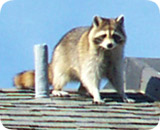
St. Augustine Raccoons:
This masked animal is fairly common in St. Augustine, FL. They frequently raid trash cans and steal pet food. They also often choose to live in the attic or chimney of your home. One of Florida's beautiful animals, but often a nuisance. We offer St. Augustine raccoon removal.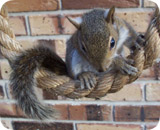
St. Augustine Squirrels:
Squirrels are often a pest in St. Augustine. They love to live in an attic, and will chew on wood or electrical wires. They are agile creatures, and live throughout the state of Florida. Call Professional Wildlife and Rodent Removal if you need squirrel removal in St. Augustine.
St. Augustine Opossum:
You may spot this animal in St. Augustine at night time, perhaps rooting through your garbage. This opportunistic animal will take your pet's food or live under your porch. The possum is a great Florida survivor, and not all that ugly.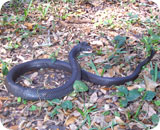
St. Augustine Snakes:
There are many species of snakes in St. Augustine, but few are venomous. If you need help identifying snakes of Florida, browse this site or give us a call at 904-312-7580. We at Professional Wildlife and Rodent Removal can provide St. Augustine snake control any time you need us.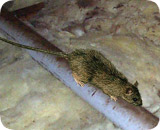
St. Augustine Rat Control:
The Norway Rat, Roof Rat, and House Mouse inhabit most areas of North America that people inhabit, including most Florida cities. They contaminate food and love to live in the walls or attic of a home. Professional Wildlife and Rodent Removal can get rid of them once and for all.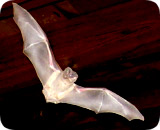
St. Augustine Bats:
Bats are special animals, and found throughout Florida. They are good creatures and eat a lot of insects, but if you have an infestation of bats in your home or building, you can give us a call for professional St. Augustine bat removal and control.REPORT WILDLIFE ISSUES: 904-209-0655
To report a dead animal on the road, an injured bird, a lost baby squirrel, a dangerous bear, or anything like that, call animal services at 904-209-0655
If they can't help, call the Florida Wildlife Commission at 904-209-0655. You can also call your local sheriff department at 904-209-0655 - they often deal with public wildlife issues.
We are experts with all kinds of FL wildlife and are familiar with the wild animals native to St. Augustine. If you need St. Augustine pigeon control, geese or other bird removal, we can help. We are experts with skunks and
skunk problems, digging animals such as moles, armadillos, & groundhogs, and we offer Florida beaver control and removal. Professional Wildlife and Rodent Removal also provides dead animal removal services. 904-312-7580
We handle nuisance animals, including squirrels, rats, mice, raccoons, skunks, beavers, coyotes, foxes, opossums, snakes, bats, birds, moles and voles. We also carry workers' compensation and liability insurance.
St. Augustine Wildlife Tip
What To Do When Rodents Are Found In Your Garage - It is common for a rodent to be found in your garage, because a garage often offers an easy point of access. It is important to keep regular maintenance and make the necessary repairs to any loose boards, shingles or any holes in your garage. A rodent is an adept chewer and climber. It only needs a small amount of space to be able to fit through the hole, so make sure that you trim trees that are close to your home, especially your garage and attic.
There are a few ways that you can prevent a rodent from entering your garage. Rodents, like other rodents, tend to scatter when the lights are on. Thus, you can keep the lights on, as well as play loud music to turn the garage into an undesirable choice for a nesting area. If a rodent needs a small amount of space to enter your garage, this means that it might be difficult to locate the exact point of entry. There might even be several entry points. Look for areas where a small amount of light shines through. There could be crevices, and if the boards are loose repairs need to be done. Using a rodent trap is also one option.
St. Augustine, FL Wildlife News Clip:
How to Remove Bats from a Building - Bats are the environment friendly mammals. One single bat can eat almost 300 insects. They are normally active in the night and they rest in the day. Their living place is dark areas, but they change it from time to time. But sometimes they can enter into a house and can create problems. Bats normally enter into old buildings which are dark. Once they have entered in a house they will try to find a dark place, like in your attic and can cause problems. Bats are very dangerous for human beings. So it is better to get rid of them.
You can identify the presence of bats at dusk. Bats normally leave the house at the night and then in the morning they come back. So this is the best time to check their presence. Once you are sure that bats are living in the house you must get rid of them as soon as possible.
As we all know that preventing is better than correcting, so it is better to secure your house against bats even if they are not living in your house. To prevent bats from living in your house try to provide ventilation in your attic and other dark parts of the house.
If you have found a single bat in your house it is not a serious problem, because it might have entered mistakenly. This can normally happen in spring or fall. Once a bat has entered in a house it will try to find its way out. So it is better to open the door and the window in this case and the bat will leave soon. But in some places there is no way out like air conditioned buildings. In such buildings bats can become trapped.
However to remove a bat colony from your house is quit a difficult task. In this case you really have to observe the bats to get rid of them. Try to observe the building at dusk and check which opening is being used by bats. Now try to close all other openings which the bats are not using. You can seal these holes with cement, plaster or any metal sheet.
Now work on the exclusion plan. Please make sure that you are performing exclusion from August to April. Most bats give birth in May and June so perming exclusion in these months is very dangerous. At this time baby bats will not be able to fly, so you cannot get rid of them. Other than this if the exclusion is performed in these months then mother bats will leave and baby bats will die because of hunger and will cause odor and some diseases. Bats are unable to fly at a temperature lower than 45 Fahrenheit, so it is not recommended to perform exclusion at very low temperatures. Also if there is a very large number of bats that are living in the building then make sure that during the exclusion all the human beings are out of the building.
Once you are sure that all the bats are excluded now you have to stop them from reentering in the building. For this try to place a one way trap at the openings, so that bats can find their way out of building. This one way door will stop bats from reentering the building. But it is better to fill these holes permanently because after the exclusion bats will try to find their way in the next few days and you have to stop them from reentering.
In many states there are several laws about the exclusion of bats. So make sure that you are aware of these laws. According to these laws you cannot poison the bats and can't use any bat exclusion device during May and June. According to these laws you cannot also apply toxic or some similar material on the den of bats.
Critter Problem at Your House? Hire Professional Wildlife and Rodent Removal
Wildlife removal is not a free service.
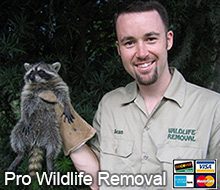 If you have a St. Augustine wildlife problem and need help, call Professional Wildlife and Rodent Removal at 904-312-7580. They provide professional wildlife control for both residential & commercial customers in the
city of St. Augustine. They offer custom St. Augustine wildlife control
solutions for almost any type of wildlife problem, whether
it be the noises of squirrels running through the attic, a colony of bats living in a building, or
the destructive behavior of a raccoon, they have the experience and the tools to quickly and professionally
solve your wild animal problem in St. Johns County in Florida. Check their prices, and for a consultation, give them a call at 904-312-7580
If you have a St. Augustine wildlife problem and need help, call Professional Wildlife and Rodent Removal at 904-312-7580. They provide professional wildlife control for both residential & commercial customers in the
city of St. Augustine. They offer custom St. Augustine wildlife control
solutions for almost any type of wildlife problem, whether
it be the noises of squirrels running through the attic, a colony of bats living in a building, or
the destructive behavior of a raccoon, they have the experience and the tools to quickly and professionally
solve your wild animal problem in St. Johns County in Florida. Check their prices, and for a consultation, give them a call at 904-312-7580
St. Augustine is the oldest continually occupied European settlement in the continental United States. The County was named after St. John the Baptist, as was the famous St. Johns river. We also service the towns of Argyle, Atlantic Beach, Olustee, Bay Meadows, Riverside/Avondale, Fruit Cove, Vilano Beach, Downtown, Intracoastal West, Mandarin, Jacksonville Beach, Houston and also animal control in World Golf Village, Lake City, Julington Creek, Watertown, and snake removal in Yulee, Wellborn, Providence, Southside, San Pablo, St. Augustine Beach and pest control in Town of Marineland, Butler Beach, Crescent Beach, Ortega, Callahan, Westside, and animal capture in Sawgrass, Orange Park and wild animal services in Lulu, Fernandina Beach, and extermination services in Ft. Caroline, San Marco, Oceanway, White Springs, Switzerland, Green Cove Springs and wildlife management in Branford, Ft. Matanzas, Middleburg, Neptune Beach, and rodent removal in Ponte Vedra Beach, Palm Valley, Mikesville, Hastings, East Arlington.
You're still reading this page? We do not operate St. Augustine wildlife rescue, or a St. Augustine zoo or nature center, or St. Augustine wildlife sanctuary or refuge for volunteers. We are a privately owned nuisance wildlife removal service company. If you need a pro in St. Augustine to solve your problem for you, call Professional Wildlife and Rodent Removal: 904-312-7580 and they can help you with your St. Augustine wildlife problem.








































